A rundown of the things you need to Get Started in Solar
The Basics:
To help you get started on your DIY Solar journey, we have collected some information you will find useful. Unfortunately, there are no simple answers in the DIY solar world and fully understanding all that goes into the system takes a basic understanding of electricity and knowing how everything connects together.
Below is the “Quick-and-Dirty” info to get you started and at the bottom of the page are some in depth links that will take you through the full details and give you the science.
Determining Power Needed
Start with planning the panels needed for your solar project. The number of panels needed depends on the amount of power you consume on a daily basis. How much power you want to end up with and what you are doing with the power at what times of day determines your solar panel and battery needs. There is a big difference between powering just the shed and powering your whole house.
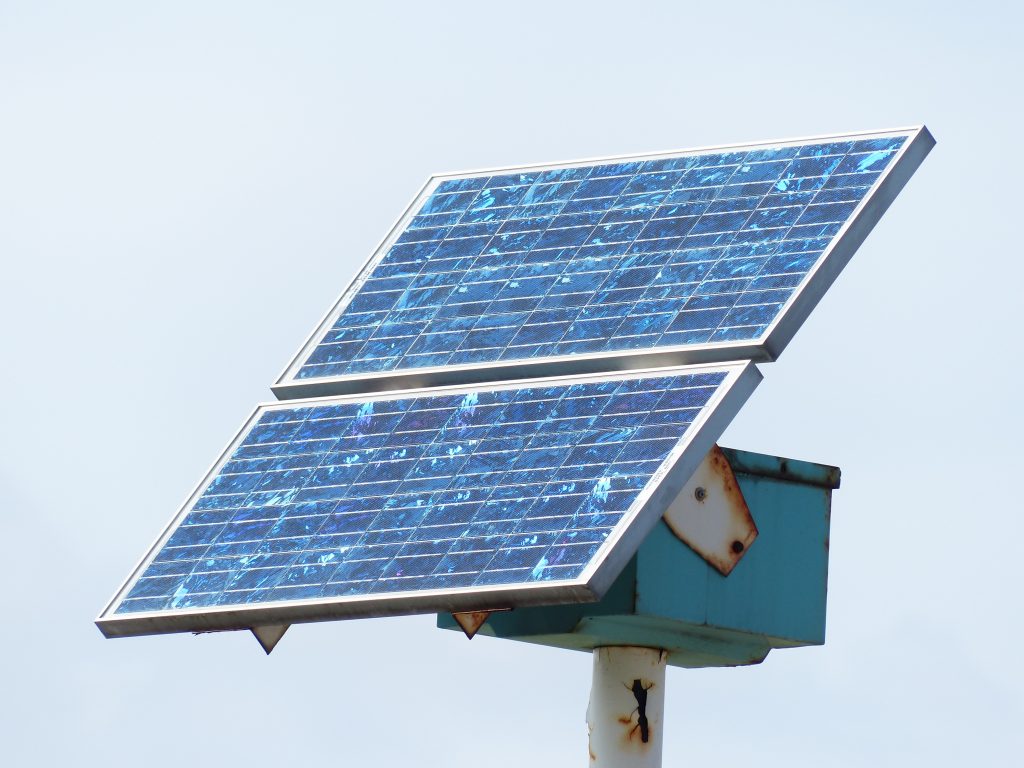
First, figure out how many watts of panels you are going to need (more on this below) and this will tell you how many panels you need. The number of watts needed also tells us the size of the charge controller, inverter, and battery bank.
Watts = Volts x Amps
Our Trina 250 watt panels are 30 V, 8.3 A and are 39 x 65 inches. Four panels would give you 1kW of (potential) power which would be enough to run a small fridge and some tools. Twenty panels would give you 5 kW.
Your power bill is metered in KWh (kilowatt hours) which means running a 1000-watt appliance for 1 hour. A 1000-watt appliance for 24 hours would 24 KWh. Amps times volts = Watts. A device plugged into 120 AC that pulls 3 amps would be using about 360 watts. If you have 8 panels connected and getting excellent sun you can potentially collect 2 KW per hour (KWh).
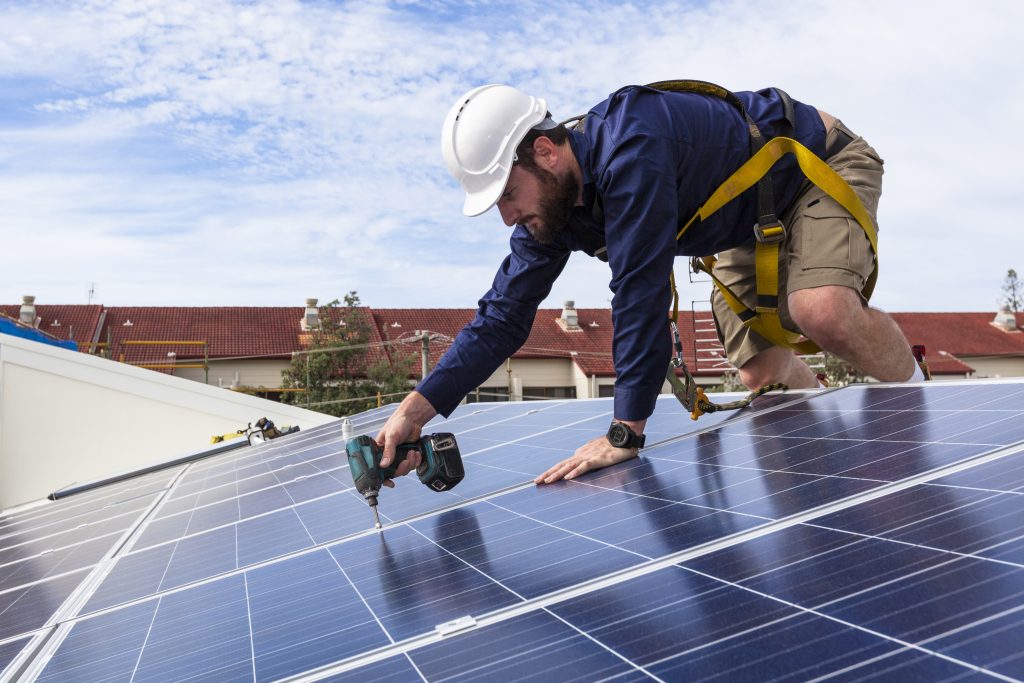
Equipment Setup
You get your best power collection at solar noon with the sun directly overhead. The panels will start the day collecting a very small amount of power after sunrise, building up to noon and then falling off after that. Panels should be facing due south with no trees, buildings, or other obstructions between the panels and the path of the sun. Also, the angle of the panels matter as the sun is higher in the summer and lower in the winter, because of the tilt of the earth. In practice, you can hope to collect 70-80% of the panels rated wattage.
The panels connect to a charge controller which connects to the batteries. The charge controller regulates the power coming in from the panels and converts it to a voltage that will work with your batteries. You could never plug the panels into the batteries directly because the voltages are too different. Your inverter also connects to the batteries and will convert your battery’s voltage into 110 AC for your appliances.
We sell panels, several different charge controllers, inverters, meters, and other equipment needed to set up a full solar system. We can also assist with installation for a negotiated fee.
Metering your power consumption
The only way to find out how much power you need to produce is to find out how much power you are using. There are three ways to go about this:
- Looking at your power bill. You will want to know how much power you used on a monthly basis for the last year or so. You can divide each month by 30 to get a general idea how much was used per day.
- Using a meter that connects to the circuits inside of your breaker box
- Using a meter that plugs into the wall socket and you plug your appliance into that
A good thing to do is get one or both types of meters and find your real-world wattage usage for your appliances to give you a good idea as to how many watts of solar you need. I would find your typical wattage usage for everything that will be on the solar and add 50% to give you the wattage of panels you will need. The extra 50% can charge your batteries on sunny days in case of cloudy days. The base number should include the big draw appliances like A/C or heaters, washing machines, etc. The idea is that you want to get your 1-hour and 24-hour usage for your appliances.
All of your appliances have info on them as to their amperage draw, but that is their max draw. Max draw is good to know, but what you really want to know is AVERAGE draw for 1 hour AND 24 hours. That meters will help you find that info. Basically, use the plug-in meter on your fridge (with fridge cold) and run it for an hour, write that info down, then run for another 23 hours and write that info down. Do that for all of your appliances that will be on your solar. Add up the one-hour draw averages and that will tell you about how much solar you need to collect per hour, at a minimum. The 24-hour total will give you a good idea as to how big of a battery bank you will need to carry the house through the night.
A 1000 watt microwave does not pull 1000 watts the whole time it is on. Few of your appliances pull 100% all the time. My full-size fridge says that it pulls 6.5 Amps, but that is only when it starts, while it is trying to cool itself down. After it is cold it pulls more like 1 amp.
Note that most households running off of solar make a point to run short term energy appliances such as a washing machine or dishwasher in the middle of the day. To minimize battery consumption you would need to cook with a different energy source (like gas) at night and only run LED lights and other necessities after dark.
The breaker box meter option:
This will allow you to see the total consumption as well as how much power is being used by individual circuits. It installs in the breaker box with clamps that snap around the main power feed wires as well as clamps for the wires going into each individual breaker. This option allows you to see the amount of power being used by “220 appliances” such as dryers and water heaters, which is something that you can’t do with the plug-in meter below. This meter will tell you the power consumption of entire circuits which includes everything plugged in on that circuit.
https://emporiaenergy.com/
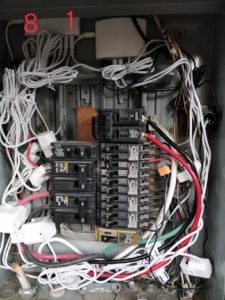
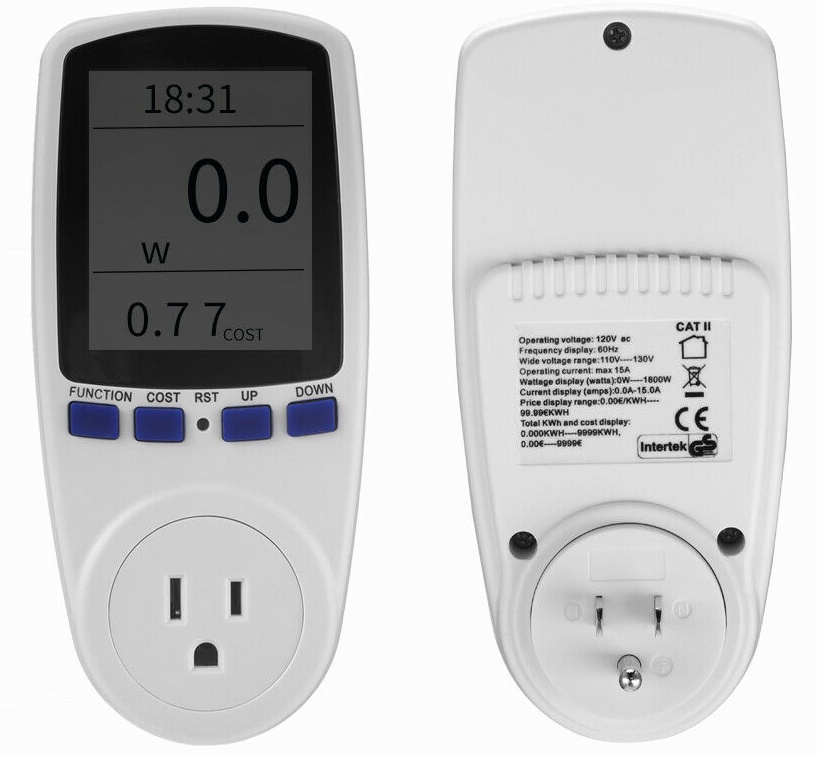
The appliance meter option:
A meter for individual appliances enables you to see an appliance’s consumption over time. Your kitchen has a bunch of stuff plugged in and with the “breaker box” option you are unable to see what each appliance is consuming. To get the info on the individual appliances, you need a meter that plugs into the wall and you plug your appliance into that.
You can connect multiple Charge Controllers to the same set of batteries:
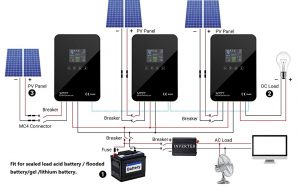
Off-Grid Solar Setup:
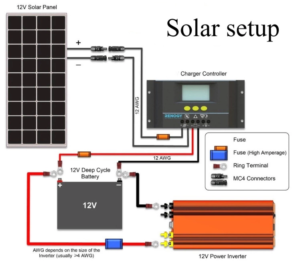
On-Grid Solar Setup:
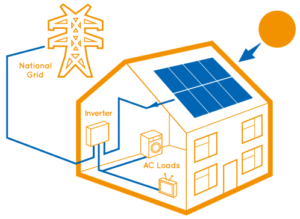
Some YouTube videos to assist with specific areas of solar:
Crimping MC4 connectors –
Testing batteries – Harder than you think –
Good summary video –
For further reading, please see these links:
Setting Up Your Solar System in Four Easy Steps
Power Your Appliances With Solar Energy: Parallel vs Series
How Many Solar Panels Do I Need to Power My House?
How Many Solar Panels Do I Need to Run My RV?

